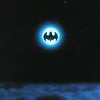
Hindenburg Omen
#1

Posted 14 December 2010 - 04:37 PM
The traditional definition of a Hindenburg Omen requires that:
The daily number of NYSE new 52 Week Highs and the daily number of new 52 Week Lows must both be greater than 2.2 percent of total NYSE issues traded that day (currently, greater than or equal to 69, which is above 2.2% of 3126).
The NYSE 10 Week moving average is rising.
The McClellan Oscillator is negative on that same day.
New 52 Week Highs cannot be more than twice the new 52 Week Lows (however it is fine for new 52 Week Lows to be more than double new 52 Week Highs). This condition is absolutely mandatory.
#2

Posted 14 December 2010 - 04:45 PM
#3

Posted 14 December 2010 - 04:56 PM
#4

Posted 14 December 2010 - 05:00 PM
I've been busy and haven't confirmed these numbers, but....at first glance it looks like these rules were met today:
The traditional definition of a Hindenburg Omen requires that:
The daily number of NYSE new 52 Week Highs and the daily number of new 52 Week Lows must both be greater than 2.2 percent of total NYSE issues traded that day (currently, greater than or equal to 69, which is above 2.2% of 3126).
The NYSE 10 Week moving average is rising.
The McClellan Oscillator is negative on that same day.
New 52 Week Highs cannot be more than twice the new 52 Week Lows (however it is fine for new 52 Week Lows to be more than double new 52 Week Highs). This condition is absolutely mandatory.
Does anyone keep track of the accuracy of this Omen (model)? How many times has it been correct and how many times has the criteria been met? What is the time-scale of the effect (when it was correct)? Without answers to these, I don't know how useful it is.
Rich
#5

Posted 14 December 2010 - 05:02 PM
From WSJ/Barron's source data:
Highs: 179 (5.7% of total)
Lows: 119 (3.8% of total)
Total: 3121
Highs are less than 2X lows
ALL Rules met
Here's the NYSE index which clearly meets test either way:
http://stockcharts.com/c-sc/sc?s=$NYA&p=W&yr=3&mn=6&dy=0&i=p38785778429&a=217353530&r=8757.png
Here's McO which clearly meets the rule:
http://stockcharts.com/c-sc/sc?s=$NYMO&p=D&yr=0&mn=5&dy=0&i=p52861189019&a=199263752&r=7016.png
Rich - here's some data re your question:
Looking back at historical data, the probability of a move greater than 5% to the downside after a confirmed Hindenburg Omen was 77%, and usually takes place within the next forty-days.
The probability of a panic sellout was 41% and the probability of a major stock market crash was 24%.
...the occurrence of a confirmed Hindenburg Omen does not necessarily mean that the stock market will go down, although every NYSE crash since 1985 has been preceded by a Hindenburg Omen.
Edited by IYB, 14 December 2010 - 05:12 PM.
#6

Posted 14 December 2010 - 05:21 PM
~Benjamin Franklin~
#7

Posted 14 December 2010 - 05:25 PM
#8

Posted 14 December 2010 - 05:34 PM
Hi UFO! Yes if you consider ONLY a MARKET CRASH as an "accurate outcome" then your 25% figure is correct. But a 25% probability of a CRASH is in my book worth noting!25% accuracy rate. From the WSJ.
http://blogs.wsj.com...-tripped-again/
U.F.O.
Added to that, if you are consider "panic sellouts" as "accurate outcome" the accuracy rate rises to 41%. Again, in my book, worth noting. And for moderate declines, the "accuracy rate" is higher still.....
Anyhow, great to see you back here Bud.
#9

Posted 14 December 2010 - 05:44 PM
#10

Posted 14 December 2010 - 05:46 PM















